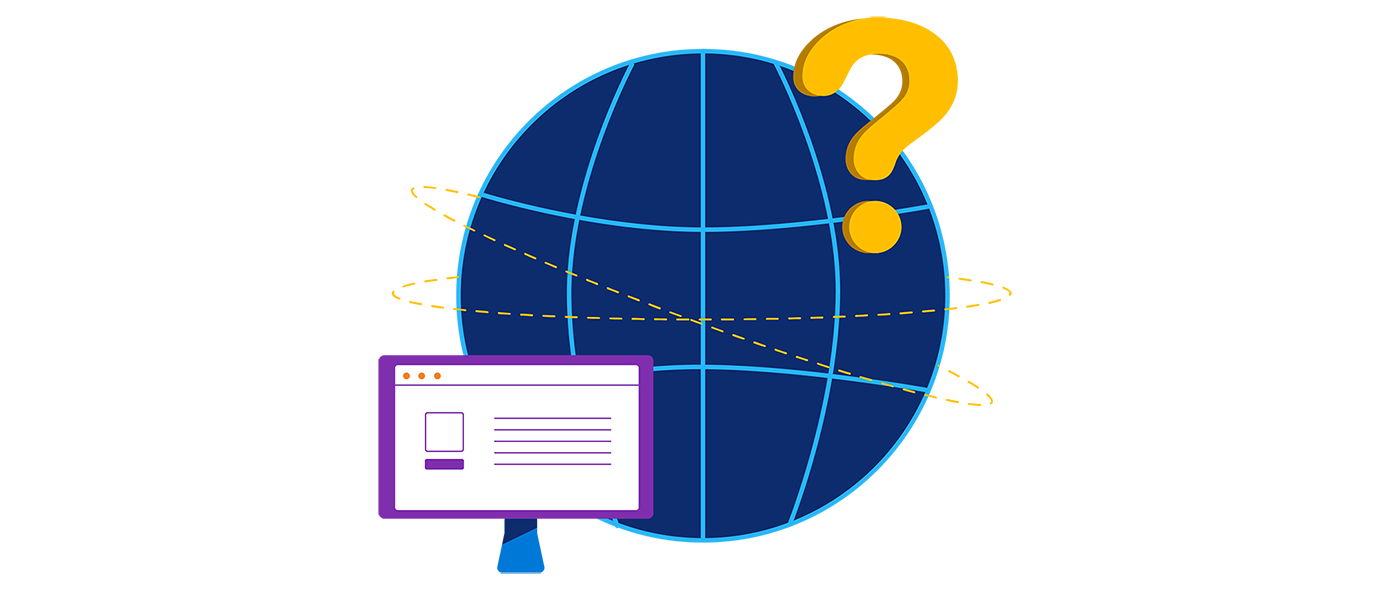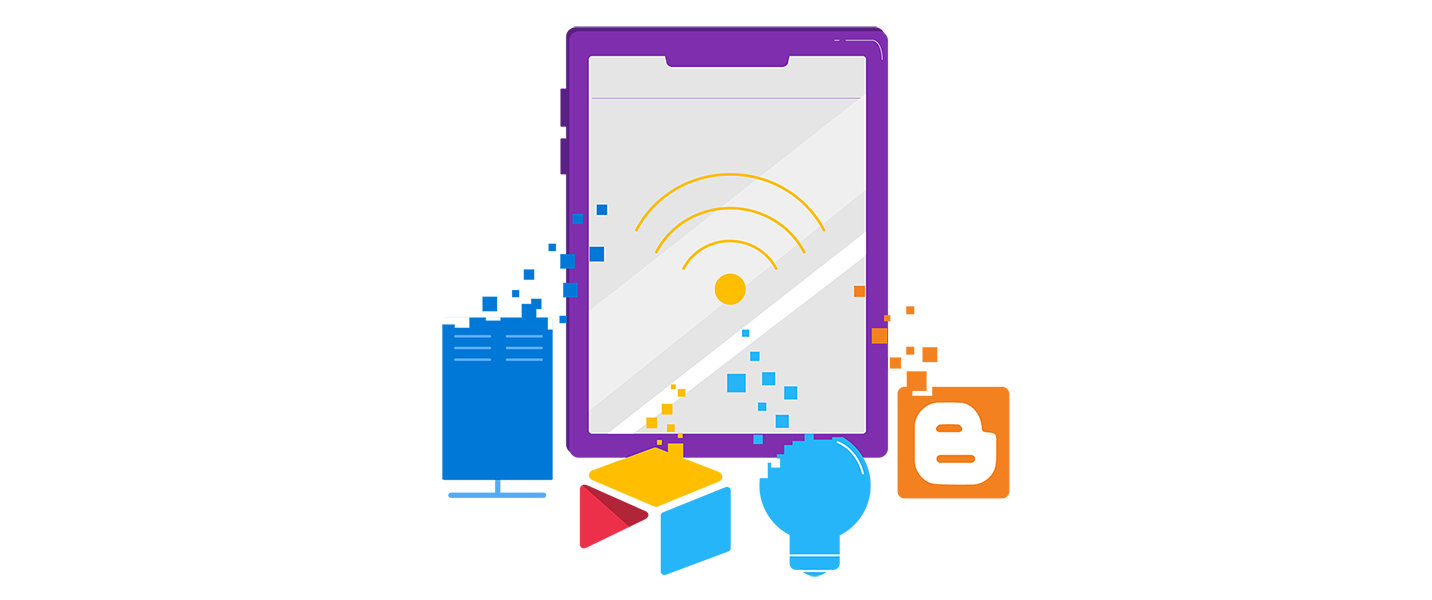The “Internet of Everything” is a term that refers to an emerging reality in which digital connectivity enhances every area of human life. The IoE offers a framework for understanding the modern-day technological landscape, in which proliferating connectivity is redefining the nature of both daily existence and business. The promise of the internet was always a promise of connectivity, and the IoE fulfils that promise.
The IoE offers limitless possibilities for embedded digital experiences; experiences that make life smoother, more integrated and more creative. Managing commerce in the IoE era requires connectivity platforms like the one we’ve built here at IFTTT.
Back to basics: What is the internet?

We know. It sounds like a silly question. But the best way to understand the Internet of Everything is to remind ourselves of what the internet really is, from a bird’s eye view.
The internet is a vast network of devices. Though these devices are geographically distributed, and though they come in a range of physical forms – from a satellite orbiting earth to the fitbit strapped to your wrist – they all speak a common language. That language is called TCP/IP (Transmission Control Protocol/Internet Protocol), and it is the communicative bedrock of the internet.
On top of the internet sits the information system we call the World Wide Web, or – now that it’s no longer the nineties – just the web. The web provides a way to exchange and view information in a variety of mediums, on pages served up by a browser. (There are almost 2bn websites, though most are seldom visited, and 0.1% of websites account for more than half of global traffic.)
The key takeaway: The internet is a vast and global network of devices that are all able to talk to one another via a common digital language. These devices, all of which are a type of networked computer, come in a variety of shapes and sizes. But they all speak TCP/IP, the language of the internet, and using this language they can all communicate with one another.
From nothing toward everything: The evolution of the internet
The boundaries of the internet are and always have been defined by where the limits of TCP/IP communication begin and end. Prior to the 1970s, computer geniuses hadn’t invented packet-switching, or the TCP/IP protocol. And so we had the internet of nothing. Starting (for the public) in around 1995, we had the internet of something. But this something was limited by our physical computer technologies. As a culture we got used to the idea that the internet meant a desktop computer, sat immovably in a room, connected via a physical wire to the wall. This understanding solidified in the cultural imagination, because this setup didn’t drastically change for a couple of decades.
But there was never anything inherent to the technology called the internet – to TCP/IP communication, or the information system called the web – that meant it was limited in this way. The internet only meant a clunky box hooked up to a squawking modem because for many years this was the cutting edge of consumer electronics. In the first decade of this millennium, this changed, following advances in technologies like the MOSFET, the leading type of silicone transistor.
In 2007, Apple released the iPhone, a device that Steve Jobs rightly called “a revolutionary and magical product.” The iPhone and soon-to-follow Android phones were revolutionary, because suddenly people could carry the internet in their pocket. Suddenly the internet could reach into places that were smaller, more nimble, and more flexible. With this development was planted the seed of a new type of internet: the Internet of Things.
The arrival of the Internet of Things (IoT) (but not quite every-thing)
The internet was always embedded in things. But through the 1990s and 2000s the nature of these “things” was highly limited. The internet-connected things were expensive, few in number, and fundamentally non-portable. The smartphone heralded a new era, in which internet connectivity became a possibility for a much vaster array of devices and endpoints. Quickly, more devices gained context awareness, increased processing power, and energy independence. Sometime between 2008 and 2009 – according to Cisco, a thought leader in the space – the Internet of Things was born.
The Internet of Things is a technological fabric in which far more objects than simply your phone possess the power of TCP/IP communication. As PricewaterhouseCoopers describe it, “the Internet of Things is transforming the everyday physical objects that surround us into an ecosystem of information that will enrich our lives. From refrigerators to parking spaces to houses, the Internet of Things is bringing more and more things into the digital fold every day.” The internet has now long since escaped the confines of the desktop computer.
In the Internet of Things, the internet communication fabric that already linked our laptops to our phones to our tablets expands to include our home appliances, our cars, our clothes, our personal electronics like toothbrushes and razors, our clothing, our banking, health monitoring and music — even our pets. IFTTT is built specially to help a variety of companies supercharge their IoT devices by empowering them to integrate with hundreds of other apps, devices and services.
The Internet of Things is growing, fast. Forrester predicts that by 2022 the number of homes with smart devices will have more than doubled. As Stasista have calculated: “The total installed base of Internet of Things (IoT) connected devices is projected to amount to 75.44 billion worldwide by 2025, a fivefold increase in ten years.” (For a look at how fundamentally the IoT could transform daily life by 2030, see this futurist vision from Infineon.)
How does the Internet of Everything differ from the Internet of Things?
The phrase “Internet of Everything” was coined by Cisco in 2013. The IoE, Cisco stated, “brings together people, process, data, and things to make networked connections more relevant and valuable than ever before – turning information into actions that create new capabilities, richer experiences, and unprecedented economic opportunity for businesses, individuals, and countries.”
The IoE is a deeper version and an elaboration of the IoT. The two concepts are connected, but the IoE looks beyond discrete physical devices and encompasses all of the connected interrelations of life. One common differentiation is that IoT entails only M2M (machine-to-machine) communication, but the IoE loops in P2M (people-to-machine) and even P2P (people-to-people) communication within an internet setting.
The IoT spreads connectivity far and wide, but its core focus remains on various, physical electronic products — like smart lightbulbs, connected doorbells, and more. . The IoE goes beyond devices. The IoE folds people and users themselves into a networked system, as connectivity is embedded in wearables, skin sensors, and more. The IoE views data as dynamic, a force that parses and utilises information rather than simply connects it, meaning that all of the connections and signals of life become included within the internet vision. The IoE is a totalizing concept for envisioning how the power of the TCP/IP link will continue to expand, and become ever more subtle, fine-grained and powerful.
The Internet of Everything and the promise of connectivity
The IoE is such a valuable idea because it places zero limits on the possibilities of digital connectivity. In the IoE, every single element of life can be infused with powers of communication and connection, in order to make our lives more integrated and more unified.
We are already getting comfortable with various basic IoT integrations. Whether it’s your smart watch tracking your daily steps, or your Alexa telling you it’s going to rain this afternoon, internet-created linkages between varying nodes of everyday life are becoming the norm. The IoE takes this further, and looks to build a future in which everything leverages internet cohesion to work better together.
Simple IoT integrations are great. But why stop there? With the IoE, when you wake up, a tiny sensor could detect your blood glucose levels and advise you on what you should eat for breakfast. Your heating and lighting could react to environmental conditions as you get up, giving your apartment a low, warm glow. Your smart coffee pot could have an espresso waiting for you, and your car could be warmed up and playing your favorite podcast when you get in. With all this drudgery of routine stripped away, you are given more time to jog, or meditate, or call your mom. Throughout, your behaviour could be logged so you can track patterns and give your doctor accurate information at your next check-up.
The more connected technology becomes, the better it can work for us. The IoE’s vision of unlimited connectivity is a vision we need. Why? Because within a few years, anyone with a connected device will have over 4,900 digital interactions, daily. We have a choice: those interactions can be isolated and repetitive, occurring their own individual lanes. Or they can come together as a sprawling ecosystem of automated, seamless, embedded digital experience. In the IoE, we can opt for the latter. Not only our things but every facet of our life can be brought into a networked experience that makes our moment-to-moment existence smoother and more internally coherent.
How the Internet of Everything is going to transform products and businesses

In Reinventing the Product (2019), Eric Schaeffer and David Sovie perceive very clearly how “the advent of the smart-connected product is about to change beyond recognition the ways in which products are used and how businesses conceive, make, distribute, and support products in the market.” A smart product, they write, will not be sold and forgotten. It will be “under a regime of remote contact and permanent data exchange with its manufacturers, who use the constant stream of information to adopt the role of the product’s lifelong innovator, service designer, intellectual minder and perpetual tutor.”
This shift in the nature of products, Schaeffer and Sovie go on, will “change user expectations for products. Smart products are containers for fluidly reconfigurable software and digital intelligence. As such, they can be adaptable, reconfigurable, responsive and easy to use via exceedingly user-friendly interfaces anytime.” Everyone, they write, “will become accustomed to highly tailored ‘evergreen’ products that can precisely fulfil very individualized purposes at any given moment. There will no longer be large mass markets for uniformly featured products.”
Only an enterprise stance that embraces the IoE vision can adapt to this future. The more connected products and services are, the more flexible, evergreen and user-friendly they become. Already, according to industry research, as many as 75% of consumers view compatibility between products as an important factor in purchasing decisions. Similarly, McKinsey have found that connecting two or more internet-enabled devices increases their individual use value by 40%. To keep up with these customer demands, businesses will have to fully embrace the unlimited connectivity of the IoE ideal.
In order to succeed in the IoE age, businesses will have to maximize the connectivity they can offer. Consumers want products and services to embed into their behavior and experience, and they want as little friction as possible in their digital lives. Compatibility between products is paramount. The seamlessly embedded digital experience is a core feature, and thus a core expectation, of the IoE age.
To adapt to the customer demands of the IoE age, an enterprise needs to avoid being roadblocked by a mass of unintegrated API protocols. To do this, it needs a connectivity platform, which standardizes communication between many disparate products and API protocols. Future-proofing a business means recognising and accepting the dawn of the IoE, and reacting in kind. The compatibility provided by a connectivity platform is the first step towards realizing a connected future where every thing works better together.
Here at IFTTT, we’ve built what we believe to be the gold standard in connectivity platforms. We’re always keen to chat to techies and business leaders who are trying to adapt to the IoE age. These are exciting times.

IFTTT is custom-built for the Internet of Everything era. Our products have attracted 18 million consumers across 140 countries and served over 90 million activated connections. We’ve helped over 700 global enterprises accelerate the digital transformation of their products into integrated services, dramatically reducing their development costs while driving customer acquisition and retention. We believe everything works better together.





